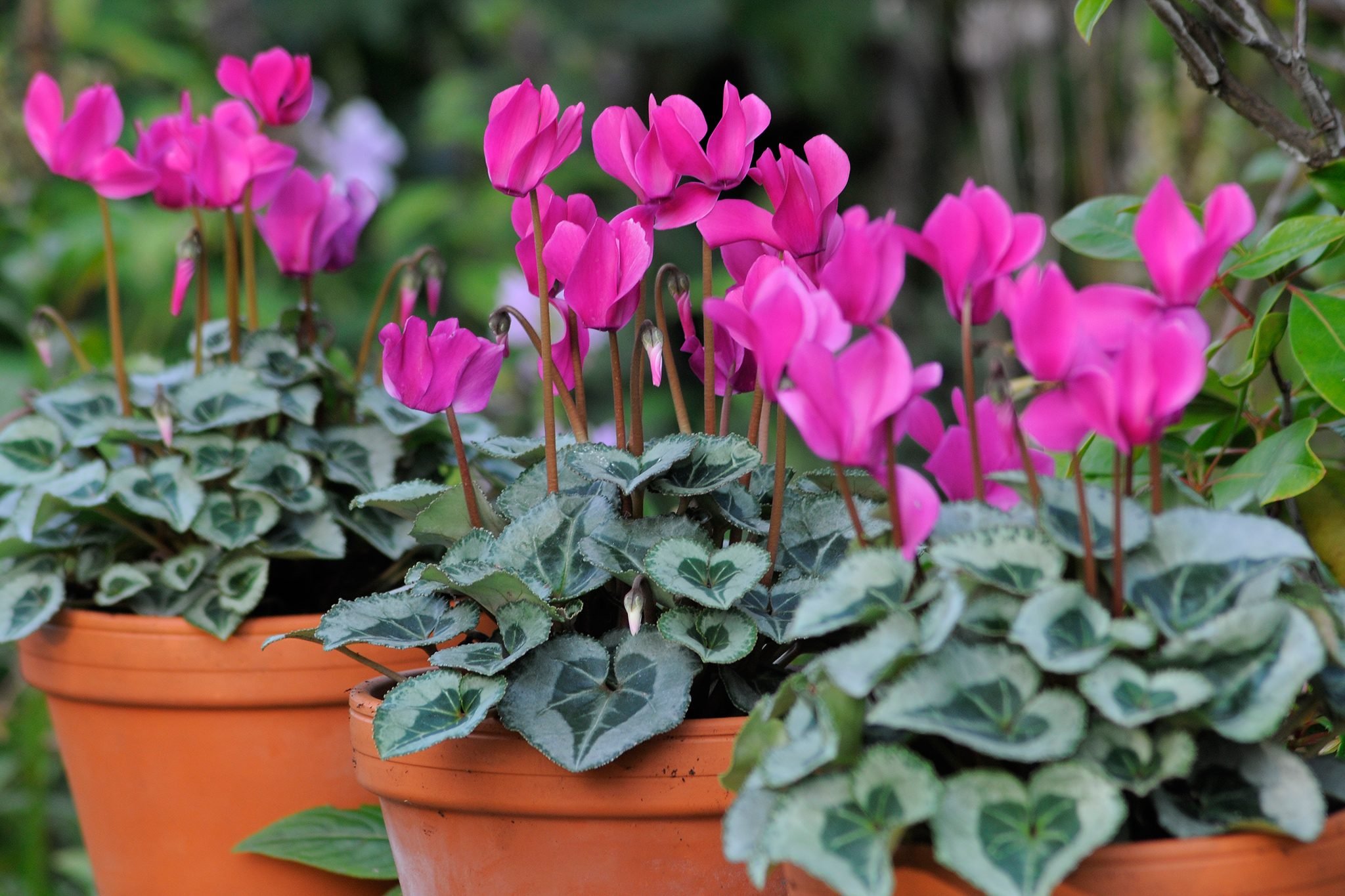How To Get Rid Of Cabbage White Caterpillars With 6 Methods
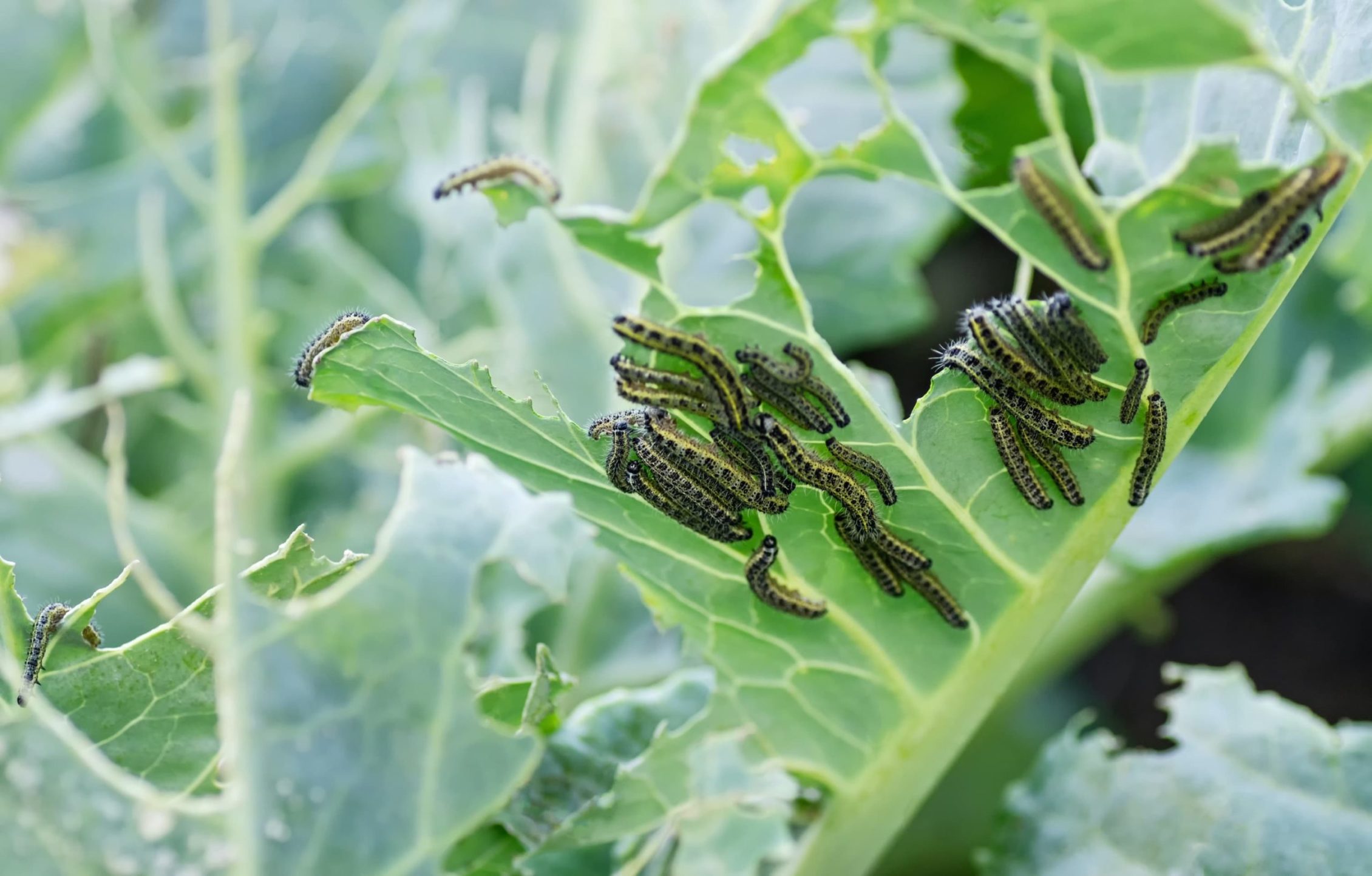
Table of Contents
Are you searching for how to get rid of cabbage white caterpillars? The 6 ideas on this page will help you protect your Brassica crops from the dreaded cabbage moth.
Even tiny caterpillars are capable of destroying your plants, and if the numbers rise drastically, you will need to go with extreme methods like Dipel spray and inviting wildlife. You must start your plant-saving mission when you see green or brown caterpillars or their eggs on the plant.
These butterflies can devour the whole garden and ruin your hard work. So it would be best to do something before they destroy the garden crop. They lay eggs and survive by eating cabbage. These practical methods can help prevent cabbage white butterflies from entering your garden and even eradicating them.
1. Stop Entry with Netting
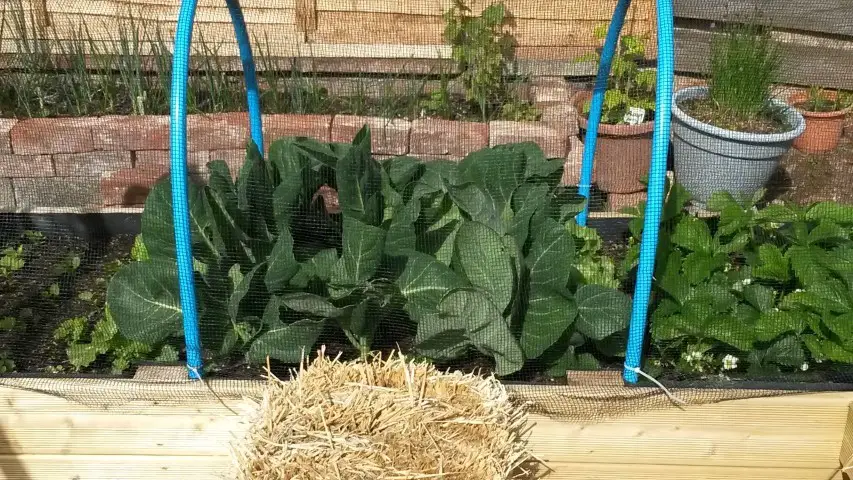
This is one of the most typical techniques people follow to save their plants; by covering the cabbage with protective netting. The goal is to prevent butterflies from laying eggs. This physical barrier may work well, but covering every plant in the garden would be a cumbersome task. There are a number of netting options available on the market to cover, for example, a frame and net system.
Our primary focus is on not letting them lay eggs. This technique works significantly, but only if we apply the barriers before letting them enter. In addition, it may also decrease your garden’s look. There is no need to worry about white cabbage caterpillars being under the soil because they pupate on a vertical surface rather than in soil.
Recommendations:
- You can protect the plants separately by covering them with paper bins if each is planted at a distance.
- Remove and check their health regularly.
- Use cost-effective curtain nettings made of nylon fabric that works best in wet weather.
Bonus Tip:
You should plan this strategy before you start to see the seedlings. If you have already seen a tiny hole in a leaf, there is no point in trying to cover it because the caterpillar moth will keep emerging even when trapped inside the net.
2. Sprays with DiPel
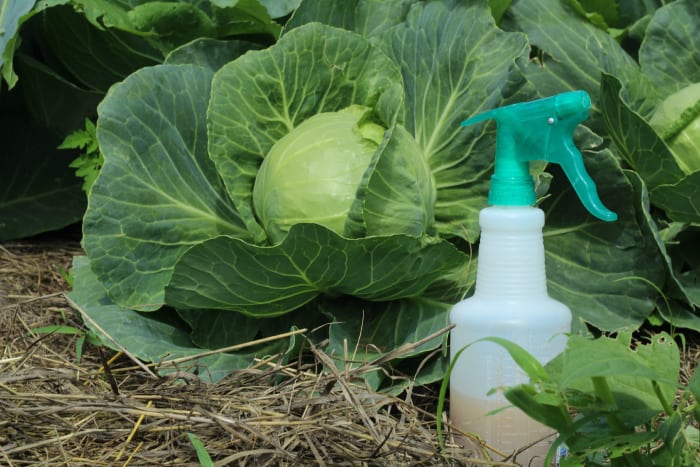
If you have recently encountered a hole or eggs on your plants, there is rarely any other possible solution than spraying it with a white moth-repellent spray. Usually, DiPel is recommended by the plantsmen. DiPel is a straightforward and helpful answer to how to get rid of cabbage white caterpillars.
The Bacillus thuringiensis in DiPel and other sprays works specifically against insects that eat leaves and does not affect other species. This mixture works as a stomach poison for caterpillars. Accordingly, the small birds might also get a chance to feast on those dead larvae. It is also listed among organic sprays. You can also choose Neem Oil, which is another organic spray to keep your garden less insect friendly. That is the reason horticulturalists recommend this.
Recommendations:
- Use DiPel or Neem Oil
- mix the biological control with water
- Spray it onto both sides of the foliage regularly for 4 days
- Check Plants’ health daily
- Don’t forget to spray on the stem as well.
Bonus Tip:
The sprayed blend takes about 72 hours to show results if caterpillars consume it regularly. So, ensure to spray it actively daily. It is harmful only to the cabbage white butterfly but is safe for pets, beneficial insects, small birds and ladybugs.
3. Keep a Watch
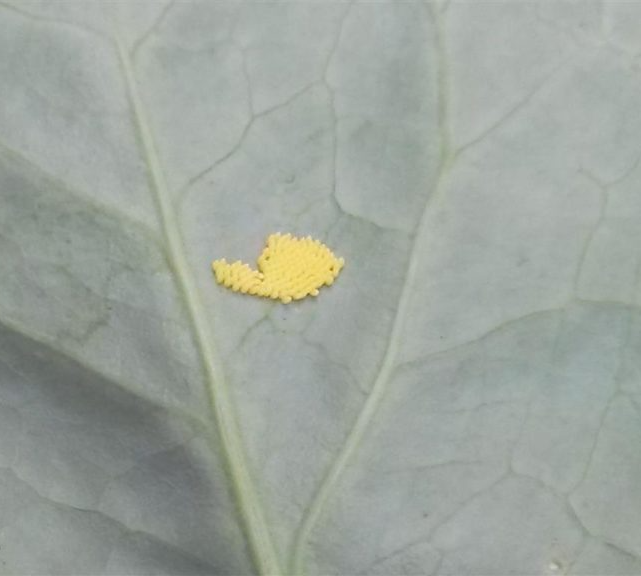
You can start a search-and-destroy mission if you want to take care of the white cabbage caterpillar alone. Remove the eggs as soon as you spot them. Keep inspecting the plant’s damage level and remove the caterpillars by hand. Taking care of a garden by yourself is one of the significant techniques, but it might drive you around the bend due to regular checkups, removing or watering. Hold on; this fact is about to blow you away! Did you know that colder weather decreases the population of cabbage, white butterflies, and other insects? Colder climates are also life-threatening for cabbage moths, like any other organism.
Cabbage White Butterfly vs Colder Temperatures
Colder temperatures will make them lazy, just like other living beings. However, they will get back in movement when exposed to heat! It is found that the cabbage white caterpillar can survive as low as -20 degrees C in hibernation (when its growth is suspended). They then start to emerge around spring. But they can survive even extreme weather conditions due to their ability to decrease the temperature by 6 degrees with the help of anti-freezing cells. However, if the temperature persists, the larva will not survive.
Recommendations:
- Watch for yellowish eggs that have longitudinal ridges.
- Cut the infected leaves.
- Take frequent breaks
- Use tools or things to tackle ( knife for easy removal or use a stream of hot water to knock them off and then crush them)
Bonus Tip:
You can take help from the cold weather. Visit your garden and remove any eggs you see on the leaves. You probably will be fed up with the back teeth doing this tedious cleaning, but it is worth it if you want your garden to look clean and save your harvest.
4. Companion Planting to Distract
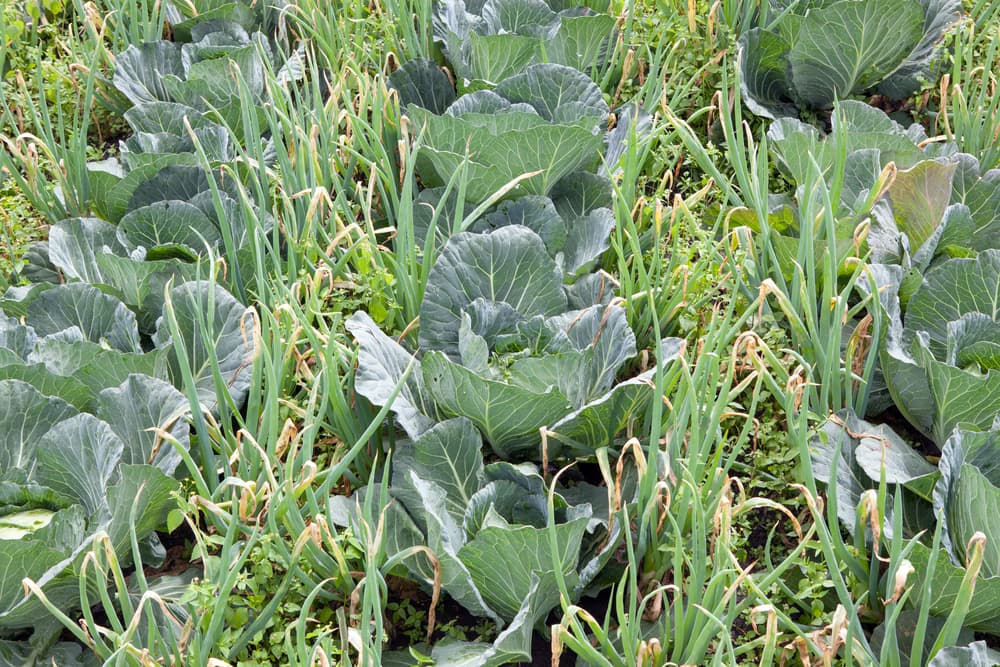
Growing a companion plant near the cabbage will work as a disguise with the same scent. These plants work as trap crops. The caterpillar will lay eggs on other plants that are used as a distraction. This would do the job and save your garden.
If you plant some aromatic herbs and companion plants (with a strong fragrance), they will make it challenging for the cabbage white butterfly to understand which is a cabbage plant and which is a distraction. Enhance your garden’s biodiversity with any of these plants.
Recommendations:
- Nasturtium (most commonly used as a distraction)
- Absinthe
- Lemon balm
- Mint
- Cosmos
Plant crops (Nasturtium) that you can use as sacrificial crops. Place it anywhere else to let the caterpillar feast on. This is another way to let them stay alive for eventually being a bird’s meal.
Bonus Tip:
You can plant Nasturtium with a plant from the onion family around the cabbage to make the double effort.Moth often gets confused and thinks it is eating and laying eggs on cabbage. That is one good reason to plant it in your garden as well.
5. Invite Wildlife
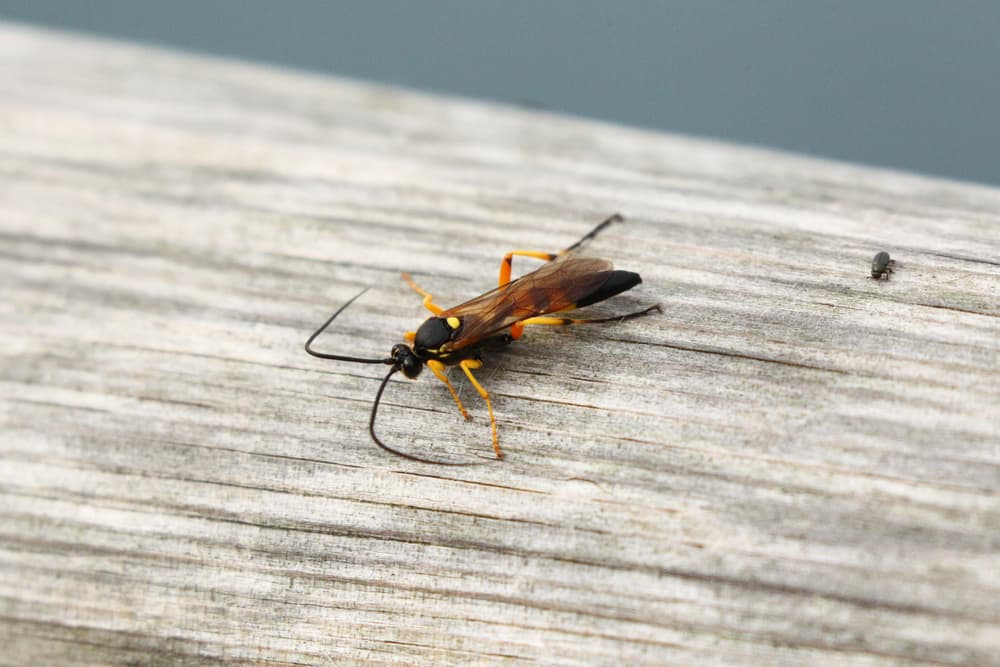
Some wildlife living beings are beneficial for our garden because they rely on the caterpillar to survive. This is why welcoming them would make our plants safe from butterflies. Other living organisms and insects also save your cabbage plants from caterpillars.
Recommendations:
- Wasps
- Birds
- Amphibians
- Reptiles
- Mammals
Wildlife will help if you own an organic kitchen garden. Birds, for example, are natural predators. However, to attract them, you can create an inviting atmosphere by including the following:
Bonus Tip:
You can also make the soil richer by spraying solutions that make it better. This would invite other beneficial insects. Take care when you invite chickens because they can also ruin the garden instead of helping you handle white cabbage caterpillars, cover the plants and only then let them enjoy their food (caterpillars).
6. Create Decoy Butterflies
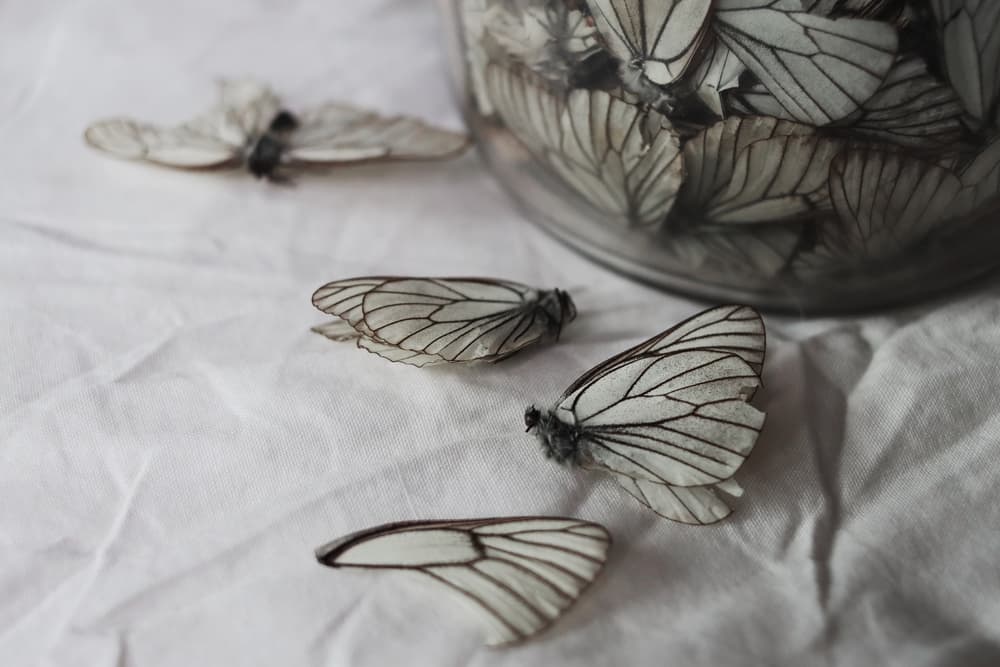
Cabbage white butterflies are found in colonies and follow a rule: not to acquire a place to lay eggs that their comrades already occupy. The decoy strategy targets preventing them from laying eggs in the cabbage plants. So, to stop them, make decoys or pretends and use them to confuse the moths.
Steps to make laying eggs challenging for them:
Step 1: Create a pretend butterfly or eggs
- from white plastic
- white fabric
- or paper.
Step 2: Place them among the cabbage crops using
- bamboo stakes or
- a plastic straw support
Recommendations:
Many criticised and found it impractical to some extent and not a compelling process. Moreover, you can’t effortlessly craft those three dotted male butterfly wings; not everyone is born artistic. There is a shred of scientific evidence that the cabbage white butterfly is an integral part of our environment. The circle of food (birds rely on caterpillars for a living) concludes that we should only be defensive and save our plants instead of killing the caterpillar.
Bonus Tip:
Combine it with any other strategy to make it work. This may work if you have a small kitchen garden, but in larger areas with a substantial amount of crops, you can go with other extreme solutions.
Conclusion
All in all, discussing some of the best methods, we hope you’ve understood how to get rid of cabbage white caterpillars. We also mentioned techniques and products that are beneficial for cabbage plants. You can experiment with combining two methods; planting repellent herbs and attracting wildlife simultaneously. Is it possible? With companion planting, it is but, Share what you are going to try. Also, provide feedback on what happened after.
What if you spray and let the birds hunt these dead larvae? Have a happy time planting and growing cabbages!

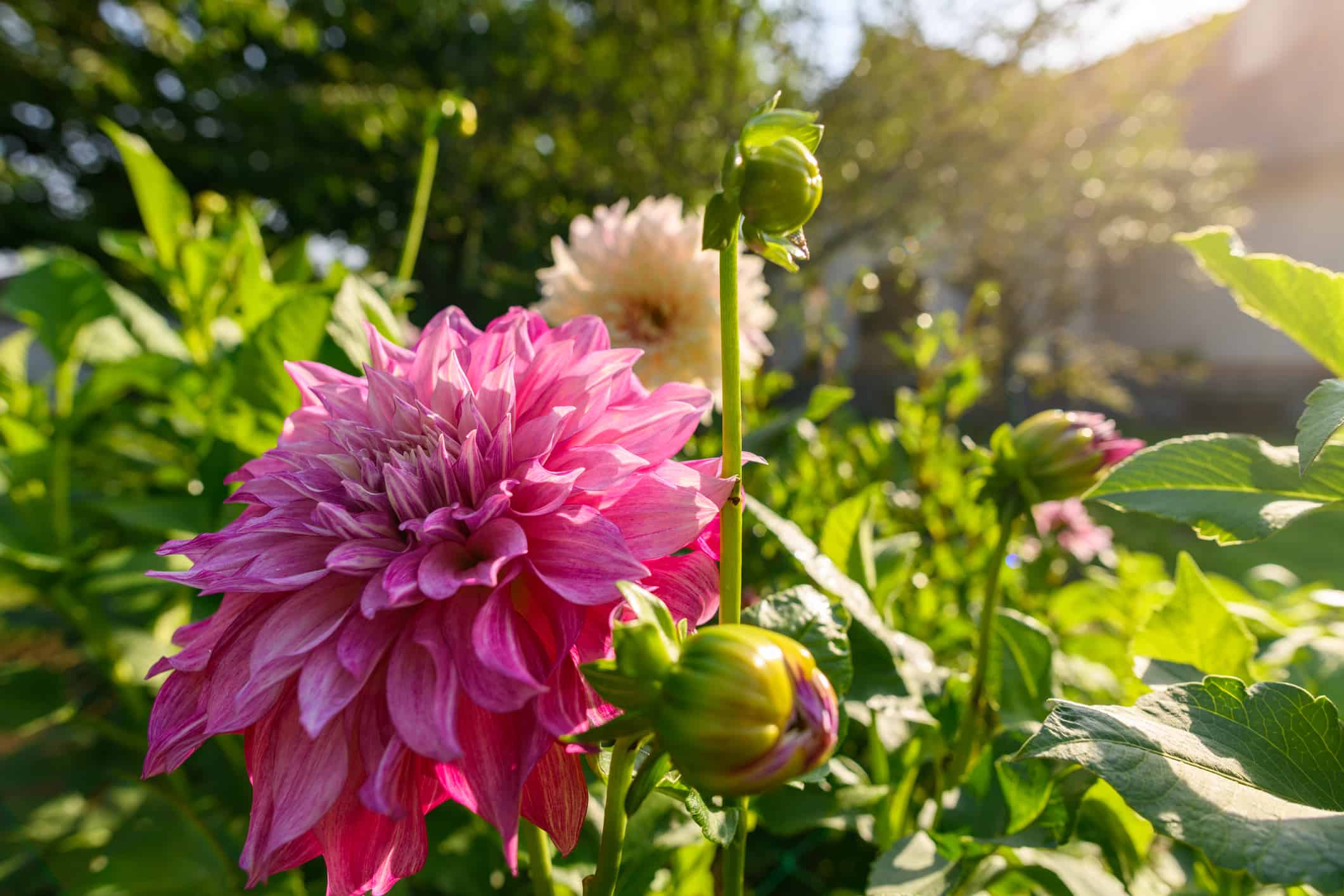

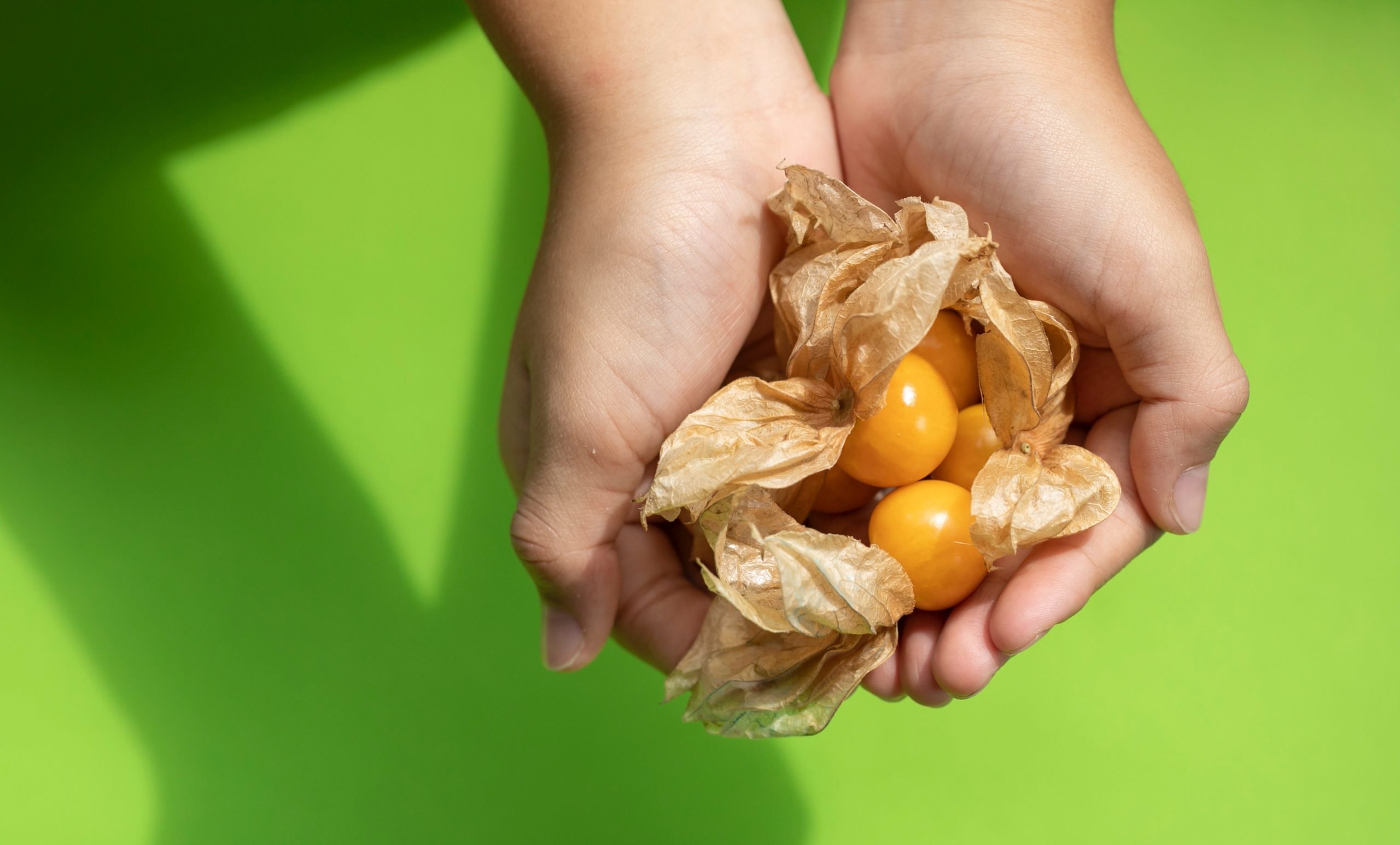
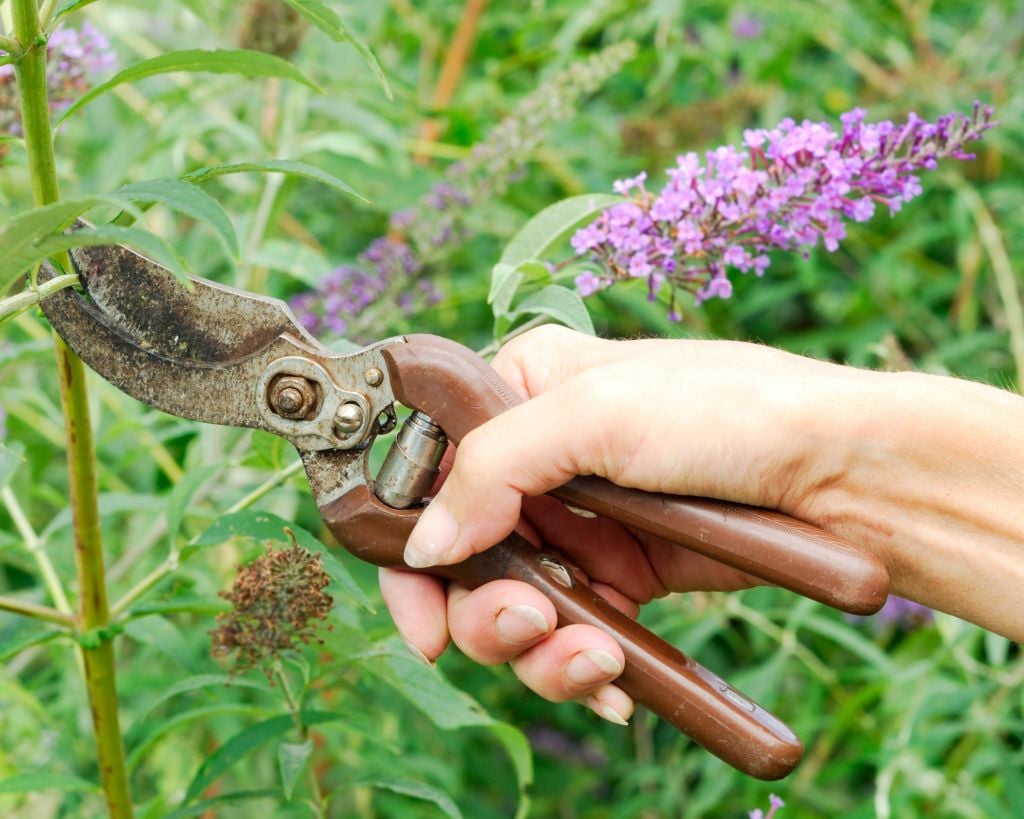
![When and How to Plant/Sow Marigold Seeds [UK]](https://staging.thearches.co.uk/wp-content/uploads/Sowing-Tagetes-Marigolds.jpeg)
